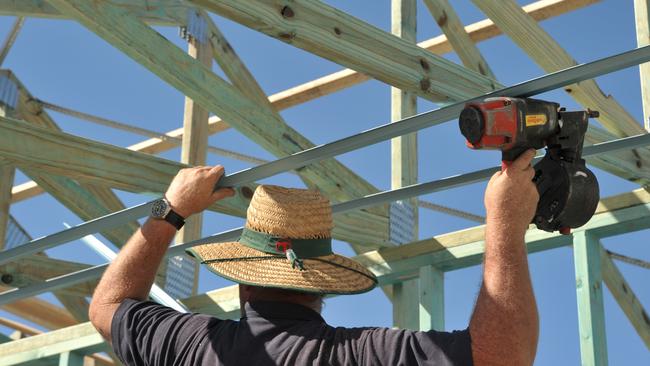Fletcher Building to cut 1500 from Australia and NZ workforce
Fletcher Building expects Australian home approvals to fall 15pc in fiscal 2021, as it slashes its workforce by 1500.

Fletcher Building has slashed 1500 jobs in Australia and New Zealand as residential construction is hit by a coronavirus-related slowdown, and it has warned of further problems ahead for the housing market.
Fletcher is to cut staff levels by about 10 per cent, meaning about 1000 positions lost across NZ, while a review in Australia would result in a workforce reduction “in the order of 500”.
The deep cuts are among the first to be made public by a building company, although some private operators are also cutting back staff as new projects dry up.
Fletcher chief executive Ross Taylor said the impact of the COVID-19 restrictions over the past two months had been significant, especially in NZ, where strict lockdowns were imposed.
Fletcher said the resultant redundancies and restructuring would mean some one-off costs, the level of which was yet to be determined.
Mr Taylor said COVID-19 meant a lot of uncertainty over the economic outlook.
“We expect COVID-19 will lead to a sharp downturn in fiscal 2021 and potentially beyond.
“Looking to the next financial year, we are planning for an environment that will see a shrinking economy, substantially reduced customer demand across all our businesses and sustained lower levels of productivity,” he said.
“In Australia, residential approvals prior to COVID-19 had been showing signs of renewed growth from a base of around 150,000. Our base case is that we now expect approvals to fall by a further 15 per cent to 129,000 in fiscal 2021.
“In commercial and infrastructure, we expect a similar dynamic to that of New Zealand with the value of work done declining by similar percentages in both sectors,” Mr Taylor said.
The company’s New Zealand business closed down when the health crisis peaked, apart for small parts of its distribution and construction units. Fletcher shut down more than 400 operating sites at the end of March and then restarted operations on April 28.
Fletcher had no revenue across most of its New Zealand operations during the nation’s level four lockdown. Australia revenues were running at around 90 per cent of pre-COVID-19 expectations.
Fletcher attributed the operating loss for April of about $NZ55m ($51.3m) to the New Zealand unit, while there was a break even result in Australia. About 90 per cent of its NZ employees were put on the group’s bridging pay program.
In May, Fletcher’s NZ businesses are trading at about 80 per cent of forecast revenues, while Australia continues to trade at around 90 per cent of pre-COVID-19 expectations.
The company’s core manufacturing and distribution businesses are expected to record positive earnings before significant items across May and June, though at lower levels than normal due to the gradual ramp-up in activity and ongoing COVID-19 restrictions.
Fletcher has already cancelled its interim dividend payment and suspended its on-market share buyback. It has now cut back its capital expenditure outlook.
In the fourth quarter spending was reduced by $NZ60m, which means total expenditure for the financial year was now expected to be $NZ240m compared to a pre-COVID-19 expectation of $NZ300m.
In fiscal 2021 the company expects its core expenditure to be in a range of $NZ125m-$NZ150m and it will spend $NZ50m on a new Winstone Wallboards plant in Tauranga.
Fletcher’s net debt at the end of April was $NZ650m and its leverage ratio was 0.8 times, compared to a target range of 1-2 times. It also held $NZ970m in cash and had credit lines of $NZ525m, giving it liquidity of $NZ1.5bn.
Mr Taylor said the decisions were difficult but necessary to ensure a strong future for the company in NZ and Australia.
Fletcher shares closed 9c lower at $3.08.




To join the conversation, please log in. Don't have an account? Register
Join the conversation, you are commenting as Logout